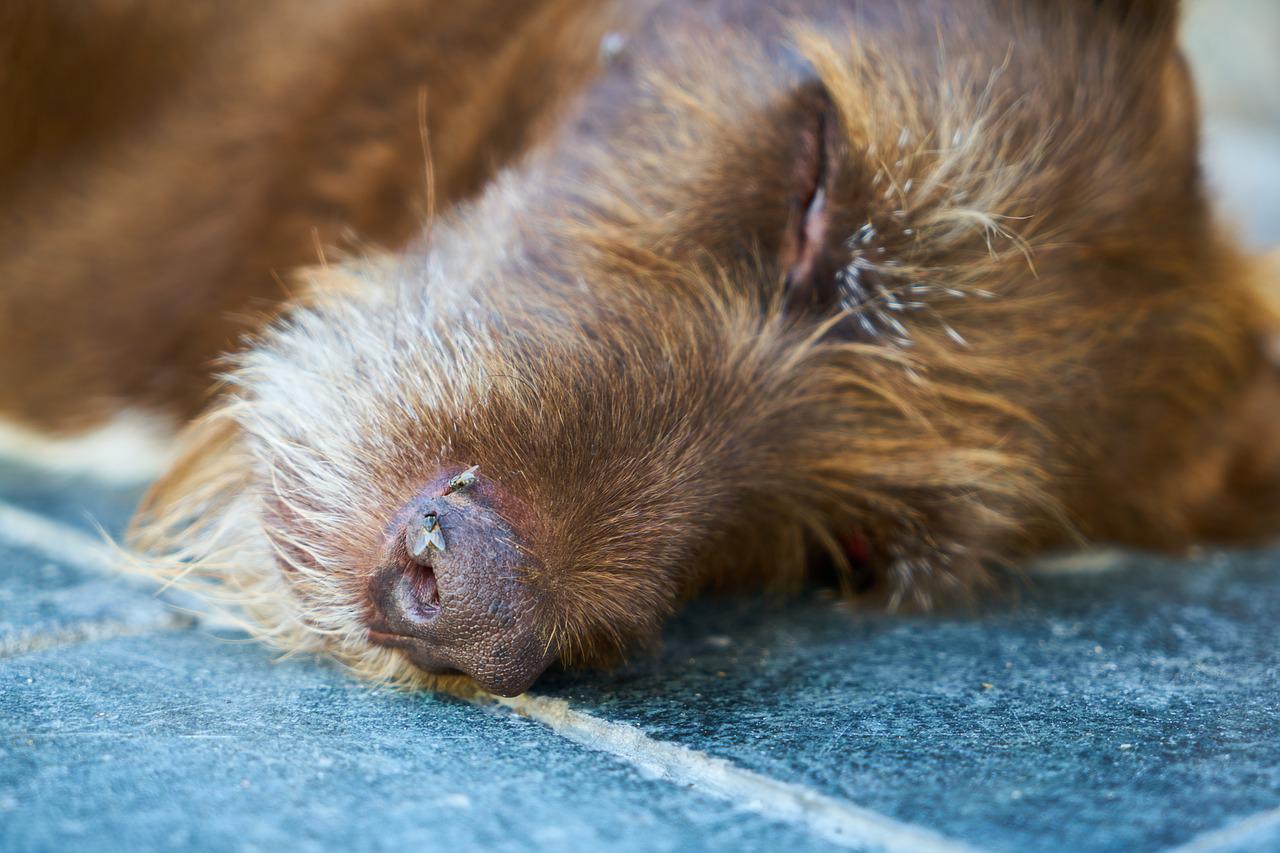As a dog parent, I can empathize with you and am very sorry for your loss. However, it would help if you learned how and why Benadryl killed your dog to prevent similar occurrences in the future. Maybe you gave your dog the right amount prescribed by the vet or on the leaflet, but what might have gone wrong?
How Can Benadryl Kill A Dog?
Benadryl could kill a dog if he had other underlying conditions before taking it. These conditions are; glaucoma, heart failure, prostatic hypertrophy, seizures, allergic lung disease, bladder neck, obstruction, or hyperthyroid (rare in dogs). Benadryl can also kill a dog if administered in excess amounts.
How Do Benadryl Work In A Dog
Benadryl (diphenhydramine) is given to dogs with acute allergic reactions, facial swelling, hives, difficulty breathing, sneezing, runny nose, itchy eyes, itchy nose, and throat. Dogs can also use Benadryl with motion sickness.
Diphenhydramine can also be used to induce sleep and enhance relaxation. It does this by preventing the production of a natural chemical called histamine by a dog’s body when you have an allergic reaction.
Obstructing another naturally occurring material produced by your body has a drying effect on symptoms, including watery eyes and a runny nose.
Although Benadryl is usually considered a safe treatment for pets, some side effects can be exhibited.
The Side Effects Of Benadryl For Dogs
Benadryl can cause a lot of side effects on dogs and people. Due to the substantial risk of side effects and overdose, the Canadian Society of Allergy and Clinical Immunology recommended against using the medication.
Some of the side effects can be short or long-term. They include;
- Trembling
- Chemical dependence
- Nausea
- Puking
- Mouth, nose, and throat dryness
- Lethargy
- Reduced blood pressure
- Alteration in appetite
- Constipation
- Can hide signs of digestive issues
- Heart flutters
- Dementia, disorientation, and cognitive problems
- Distress
- Moodiness
- Depression
- Lack of urination
What dosage of Benadryl is safe for my dog?
Dogs should take 1 mg of Benadryl per pound of body weight per 8 or 12 hours. For example, your dog will require 10 mg of the medication every 8 hours if he weighs 10 pounds.
The American Kennel Club states that dogs can safely take Benadryl when prescribed by a doctor and only if they have been identified as having an allergic reaction or motion sickness.
Precautions when using Benadryl
The precautions below should be adhered to when administering Benadryl to a dog;
- Although pet owners can buy Benadryl over the counter, it is advisable that it is used only after a veterinarian’s approval. The optimal starting dose can be determined by your veterinarian, who can also check to see whether Benadryl interferes negatively with any other medications your dog is on.
- Make sure the Benadryl you buy over the counter contains diphenhydramine solely. Some Benadryl contains additional substances like acetaminophen or decongestants that may not be suitable for dogs. Also, ensure there is no xylitol or dyes present.
- Always check the packaging to ensure the Benadryl is safe, as expired medicines can cause adverse effects on your dog.
- Never attempt to determine the dose on your own. Consult your vet to know how much is okay with your dog.
- Dogs who are expecting or nursing should not take it.
Risk Of Overdosing Benadryl For Dogs
It would help if you were more careful because there is a small safety margin when administering Benadryl to dogs. If your dog took an overdose of Benadryl, it could lead to the following problems;
- Increased heartbeat
- Trouble when breathing
- Aggression
- Fever
- Convulsions
- Tremors
- Red eyes or enlarged pupils
- Excessive drowsiness
- Inability to walk and loss of coordination
- Having trouble urinating
- Delirium
If your dog exhibits one of the above signs after taking Benadryl, you should immediately take him to a vet.
When Does Benadryl Leave A Dog’s System?
Benadryl remains in the body until the liver eliminates it. The medicine can linger in the bloodstream for up to 24 hours after consumption because the liver takes some time to eliminate it.
This means that after giving Benadryl to your dog, it will start working within 30 minutes. However, it won’t begin to exit their system for around 24 hours.
This implies that even though your dog consumed Benadryl several hours ago, it would likely still experience its effects if he consumed it.
It’s also important to remember that the medicine may stay in your dog’s system longer if they have liver or kidney illness.
My Dog Took Too Much Benadryl. What Should I Do?
Your dog could get sick if they consume too many Benadryl tablets. It’s crucial to contact your veterinarian right away. You could be instructed to take your doggie to the vet clinic.
Contact a veterinarian immediately if you suspect you may have given your dog too much Benadryl or if you notice any other problems with him.
Natural Alternatives To Benadryl For Dogs
Alternatives For Skin And Allergy Issues
Colostrum
First milk from the mother contains colostrum which aids in the development of the newborn’s immune system. Additionally, it might support your dog’s immune system in fighting allergies. Allergies to the environment and the changing seasons respond well to colostrum. Give your dog two doses of 1/3 tsp. of powdered colostrum for every 25 pounds of body weight.
Medicinal Mushrooms
Another item that can strengthen your dog’s immune system is mushrooms. This is due to beta-glucan, the primary therapeutic component. Beta-glucans alter some immune cells, assisting in the reduction of inflammation and allergic reactions. Other immune cells that aid in removing harmful substances from the body are stimulated by it. The mushrooms that contain the most beta-glucan are:
- Maitake
- Reishi
- Cordyceps
- Shiitake
- Turkey tail
If you feed whole mushrooms to your dog, make sure to boil them first. Raw mushrooms are almost impossible to digest or purchase in a mushroom supplement.
Two qualities that should be present in a mushroom supplement are:
- Verify the analysis certificate to ensure it contains at least 30% beta-glucan.
- Ensure that the mushrooms you are using are whole and not solely mycelium. The mushroom’s mycelium is only a small portion; because it is grown on grains, it has a significantly larger carbohydrate content and a lower beta-glucan content.
Quercetin
Sometimes people refer to quercetin as “Nature’s Benadryl.” The reason for this is that it may prevent the body from producing histamines. Natural sources of quercetin include berries and apples (especially unpeeled). Additionally, you can get a quercetin supplement at a health food store. For every 10 pounds of body weight, give your dog 80 milligrams of quercetin powder.
Anxiety CBD Oil
The hemp plant is the source of CBD oil for dogs. It is similar to marijuana because it offers relaxing benefits without the psychoactive THC. Additionally, studies currently show that CBD has anti-anxiety properties. You can administer CBD oil to dogs; the most frequent adverse effect is that they might feel drowsy. Get a CBD oil that is organic, full spectrum, and contains all the cannabinoids you need: CBD, CBA, CBC, CBN, and CBG. The usual guideline for CBD dosage is to give your dog 1 mg to 6 mg of CBD per 10 lbs. of body weight because these all interact to create an “entourage effect.” (You’ll need to verify how much CBD there is in each drop of the oil you purchase)
Alternatives for Motion Sickness
Herbs
Fennel, ginger, and peppermint are all effective herbs for nausea. One or more of these plants can be used to brew tea. Give some to your dog around 30 to 60 minutes before getting in the car and letting it cool. Administer 1tbs per 20 lbs. of body weight.
Flower Essences
Flower essences can help if your dog is nauseous because of anxiety. Give him Rescue Remedy, a flower essence blend, before each journey. It can be given as often as necessary. It has no negative effects and is pleasant and calming.
Practice
Start by taking your dog for numerous brief walks around the block or take him to a fun location like a park. In this manner, he will begin to anticipate a good time when he gets in the car rather than stressing about a trip to the veterinarian or groomer. He will more likely become car sick if he is worried while driving.
Acute Vaccine Reactions
Your veterinarian might advise taking Benadryl before receiving a vaccination. This typically occurs if your dog has already experienced an acute vaccination reaction. Acute reactions are those that manifest quickly, typically in the hours or days following vaccination. This kind of response may be severe. For example, it could be a fever or facial swelling, both of which are uncomfortable but treatable.
However, it might be fatally dangerous, leading to anaphylactic shock. Homeopathic treatments can assist with vaccination responses but do not take the chance. A larger likelihood of a vaccination reaction in your dog exists if one has already occurred.
Try to avoid giving Benadryl to your dog now that you know the dangers and some natural alternatives!
Conclusion
It is rare for a dog to be killed by Benadryl. However, death can occur if your dog has an underlying condition masked by taking Benadryl.
Furthermore, using Benadryl can lead to death and other serious side effects if given an overdose. Ensure you administer Benadryl under the prescription of your vet. Remember, there are also many great alternatives.

